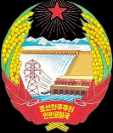 America is Waiting | New Feet by Brian Eno and David Byrne (My Life in the Bush of Ghosts)
America is Waiting | New Feet by Brian Eno and David Byrne (My Life in the Bush of Ghosts)
Dhyana and Donalogue | Speaking in Tongues I | Sacred Stones by Sheila Chandra (Weaving My Ancestors’ Voices)
In 1979, Brian Eno and David Byrne, who had been working together on Talking Heads records, embarked on a remarkable project, the result of which was the 1980 album My Life in the Bush of Ghosts. Lavishly reissued by Nonesuch, Bush of Ghosts sounds perhaps better today than it did then. Inspired by then-obscure African and Arabic music as well as the nascent hip-hop scene and its elision of the roles of composer, performer and curator, Eno and Byrne set out to create the music of an imaginary culture.
There were twists and turns along the way — fascinatingly described in the intelligent new liner notes by Byrne — and the final product, made up of rhythm tracks and found vocal samples, captured the zeitgeist of an uncertain time during which convulsions in the Third World intruded on the consciousness of the First. The period during which the album was made was one of relentless coverage of the Iranian hostage crisis. It also saw the independence of Zimbabwe and the kidnapping and murder of the American ambassador to Afghanistan. In America, Ronald Reagan was elected president. The album’s vocal samples of African and Muslim singers, African-American and white American preachers, angry political talkshow hosts and laughing exorcists create an ominous swirl of cross-cultural superstition and ecstaticism that reflected the atmosphere of those times and resonates strongly today.
“America is Waiting” probably reflects the atmosphere of the hostage crisis most clearly, but its mood of expectation, condemnation and menace could have come straight from today’s talk radio. “New Feet” is an outtake that uses beautiful samples of Muslim (I think) singing. You can listen to snippets of all the tracks at the Bush of Ghosts website, which is chock full of goodies, including a remix site, and well worth a look.
A very different approach to voice across cultures is that of Sheila Chandra, the first English pop singer of Indian descent to chart a hit. On her album Weaving my Ancestors’ Voices, she specifically wanted to move past the idea that fusion is about mixing up exotic instruments, so she limited herself to voice and drone. The fusion is all in the vocal style. “Dhyana and Donalogue” is an adaptation of a very old Irish ballad, with some wordless Muslim-style lament thrown in. “Speaking in Tongues I” is a bravura performance of Indian spoken percussion. And we end with “Sacred Stones,” a gorgeous blending of Christian and Hindu prayers and harmonies. Amen, Shiva!


 On Tuesday, August 8, at 7:30 p.m., the 82-year-old Korean Living National Treasure dancer
On Tuesday, August 8, at 7:30 p.m., the 82-year-old Korean Living National Treasure dancer 
 There are certain flavors that I will always associate with summer: fresh blackberries hot from the sun and picked straight from the vine, chocolate milkshakes like my grandmother used to make when my best friend and I would watch Scooby Doo, ice-cold lemonade.
There are certain flavors that I will always associate with summer: fresh blackberries hot from the sun and picked straight from the vine, chocolate milkshakes like my grandmother used to make when my best friend and I would watch Scooby Doo, ice-cold lemonade.


